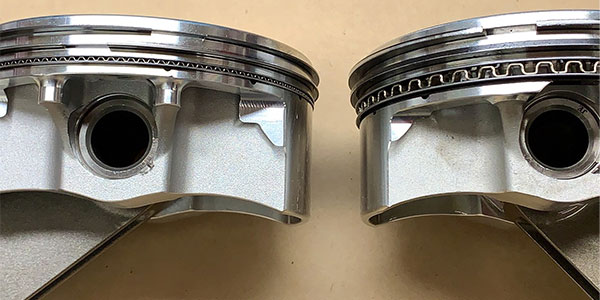Thanks to those who have commented with their temps. i'm just trying to get a bearing on the efficiency of the cooling system in my truck and it seems like it's doing well however don't have any summer heat data yet since my truck just got running in october/nov 2022. ambient temperature ranges out here in western washington have been 50's to a few times in the low 20's at night and i typically see low to mid 180's under all conditions. Low load cruising the truck will be in the low 180s and idle and full load on the dyno and street i have only seen as high as 186. The highest load the truck has seen so far was last weekend going up steven's pass with ambient temps in the mid 30's i think its a 8/9 mile climb with an average grade of 5-6ish % going to 4100ft not extremely crazy compared to some other passes but its definitely not flat. when i say heavy load it was basically in boost the whole way up, being able to pass people going up hill feels great, truck was loaded with all 4 of us and a trunk full of snow gear for the weekend and snowboarding etc.. temps never climbed above 187. the cooling system is brand new and i have a blue clutch with i think 7 or 8k cst fluid and a griffin rad. I had a derale 9k series 13 row external oil cooler plumbed in via mocal thermostatic sandwich plate at the oil filter. I removed the cooler to see how temps change and I saw roughly the same coolant temps maybe a 2 or 3 degree drop and I saw a roughly 10 psi oil pressure increase. Oil temps without the cooler are in thr low 170s idling for a bit in the cold and high 180s to high 190s on the freeway, flogging on it get its to the low 200s I've not seen higher than 210f. My hood is also vented quite well and there is a massive amount of heat that gets released from the turbo area and sitting at idle the vent area at the front of the hood allows quite a bit of air from the radiator/fan to escape. My last thought on my engines cooling efficiency is due to the ring pack on my Ross pistons. I started looking into it when I came across this article and video. My piston ring pack consists of a 1.5mm top 1.5mm 2nd and 3mm oil ring vs a 1.75mm 2.0mm 4.0mm stock setup. Basically friction = heat (duh) as well as it being a horse power trap, you also need to take piston ring tension in to consideration but the thicker the rings the more the heat.
We all recognize that internal combustion engines generate heat as a by-product of combustion. Both air-cooled and water-cooled engines deploy strategies to dissipate that heat. This is all done in an effort to keep the engine from running too hot. But what does that have to do with piston...

www.enginebuildermag.com
P.s. I love geeking out on the content from lake speed Jr, loves race cars and oil and things that go fast.
Anyways.... we will still see what summer has to say about things but I have a good feeling. Happy boosting!


